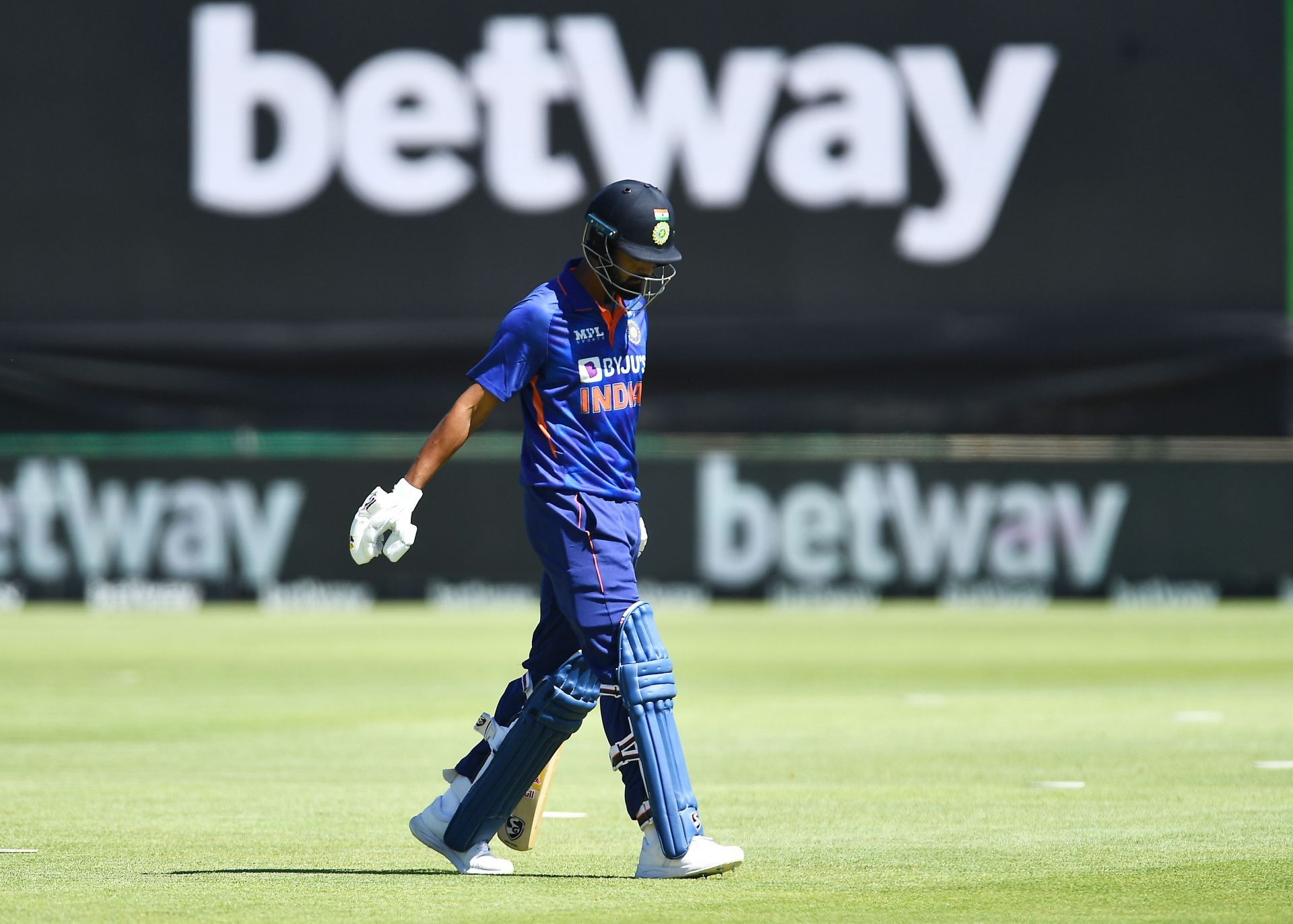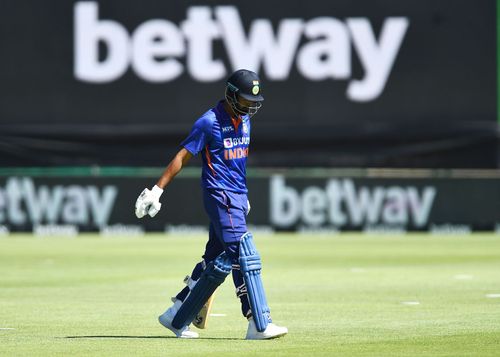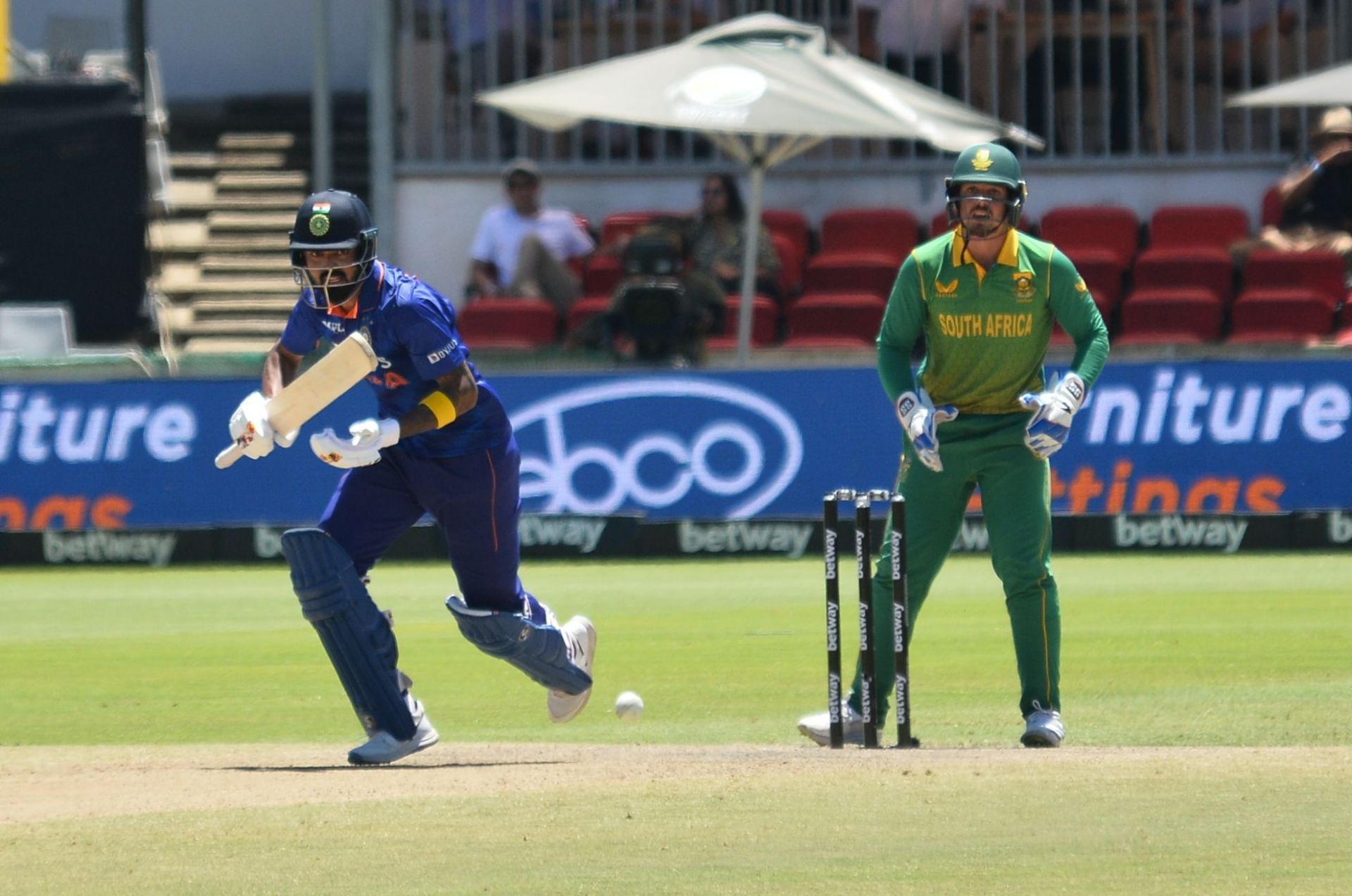
KL Rahul should be empowered by captaincy, not be restricted by responsibility

7th October 2021, Dubai, the Punjab Kings are almost out of contention for the IPL play-offs when KL Rahul strides out to the centre, hoping that his side can hunt down the 135-run target the Chennai Super Kings have set. Prior to this game, PBKS have developed a habit of botching simple run-chases and their collapses have, rather uncannily, been instigated by Rahul’s dismissals.
That, though, hasn’t been because the Punjab Kings skipper has batted recklessly. On the contrary, it has been due to his conservativeness, meaning that his departure has either left his team with a lot to do or has confused them on the kind of tack they need to adopt.
On that afternoon in Dubai, however, Rahul leaves nothing to chance. He rocks up, decides that he wants to flex his attacking muscles and creams 98 runs off 42 balls. He remains unbeaten in the chase too and ensures that there aren’t any hiccups (for a change).
In a nutshell, this was the sort of knock that he played regularly during the 2018 edition of the IPL – an edition where he truly announced himself as India’s best T20 opener and struck at more than 150. As the seasons have progressed, though, that iteration has become the glorious aberration, with his ascent to captaincy playing a major role.
Interestingly enough, in the aftermath of that game, Rahul openly admitted that he hadn’t been able to bat the way he would’ve wanted because of everything that was happening around him. He even said that there was a risk he would let his team down if he was a bit more free-flowing and threw more caution to the wind.
Thus, when the right-handed batter seamlessly transitioned into international cricket and smashed Australia and England in the T20 World Cup warm-up games, many felt that the burden of captaincy had weighed him down. More importantly, countless people believed that if Rahul wasn’t skipper, he would’ve taken down each bowling unit he would’ve faced.
From a broader Indian perspective, however, that is as close to fantasy as anyone could get. Not because Rahul isn’t capable of tearing any bowling attack to shreds, but because he has, owing to his class, cast himself as a long-term captaincy option for the nation.
Unsurprisingly, there were plenty of eyeballs trained on him as he led India out for the first time in ODI cricket at Boland Park. That particular adventure didn’t materialize as expected, for the Men In Blue succumbed to a convincing defeat.
However, the swift turnaround meant that Rahul was accorded another opportunity to set the record straight – just days after the opening fixture, and months after showing what he could be when the handbrake was lifted.

India won the toss in the 2nd ODI and chose to bat first on a surface that had been used for the earlier match too. The gap between the contests, though, had meant that the curator had enough time to roll the pitch and bind it together at the outset.
Cricketing logic, thus, suggested that the visitors would’ve been better off utilizing the field restrictions. To an extent, Shikhar Dhawan tried to do so too. But Rahul adopted a completely different modus operandi.
KL Rahul played a conservative knock for India
He retreated into his shell very early and was content to just look for singles and doubles. He was offered a few loose deliveries but he never had the right intent to capitalize. And, when he tried to throw his bat, he was nearly caught by Janneman Malan at gully.
As the overs ticked by, there was increased restraint on Rahul’s part. Not only did he make Aiden Markram look like a world-class spinner, he forced Dhawan to indulge in risk-taking against a less-favourable match-up.
Markram, for those wondering, turns the ball into the Indian captain and has played with Rahul previously. Hence, the wiser move would’ve been for the former PBKS skipper to attack Markram, with Dhawan waiting for a better match-up against Keshav Maharaj.
But that didn’t happen, meaning that Dhawan tried something out of the ordinary and perished. While it would be completely naïve to blame Rahul entirely for Dhawan’s dismissal, there can’t be denying that he played a part.
The lull in scoring rate also pressured Virat Kohli into a loose drive – a shot he rarely plays at the start of his innings, especially if he comes out to bat when the field restrictions have been lifted. When Dhawan and Kohli departed, Rahul was batting on 23 (32) and 24 (33), respectively.
Post that phase, Rishabh Pant came into his own and ensured that the Indian captain didn’t feel the run-scoring pinch. The latter tried to rotate strike but was unable to do so effectively, meaning that he crawled to 55 (79) before being dismissed.
This, by the way, was the period where Rahul was supposedly playing second-fiddle to Pant. He only scored 31 (46) at a strike rate of 67.39, which was lower than the strike rate at which he was batting prior to Dhawan and Kohli’s dismissal. So a case could be made that he slowed down even further and it took an extraordinary innings from Pant to keep India in the hunt.
The initial inclination might be to waive off this essay and term it an anomaly. The bare fact, though, is that Rahul has, over the past couple of years, rarely played impactful knocks batting in this manner. There have been a few innings, namely in the IPL where he has begun slowly and capitalized towards the end. But those have been the deviations from the norm.
This isn’t indicating that Rahul needs to throw his bat at everything and be reckless. Instead, it is illustrating a trend that is simply not working – a trend where he eats up a significant chunk of deliveries and fails to kick on. Not only does that put more pressure on the middle order, it also arrests whatever momentum has been generated elsewhere.
The counter-argument, from his standpoint, would be to indicate that there isn’t enough muscle in the middle order. There is a bit of truth to it too, considering the likes of Shreyas Iyer and Venkatesh Iyer haven’t played for India consistently.
But taking up too much responsibility, which invariably transfers more pressure onto cricketers that he is anyway not confident about, doesn’t work out well either. At the moment, Rahul, especially when he is captain, feels that he has to score a bulk of the runs.
From a certain perspective, there is nothing wrong in assuming that kind of responsibility. The problem, however, is that this extra responsibility is restricting his game, rather than empowering it.
The former PBKS skipper, unlike most others, has a massive repertoire of strokes and has the ability to execute it against any kind of opposition and under any circumstances. Yet, the longer he keeps hiding them in his closet, the tougher it gets to unfurl them when the situation demands flamboyance.
Rahul is still young in his captaincy career, and to an extent, his stint at PBKS has made him adopt a method that isn’t very tenable. Thus, for now, a genuine attempt could be made to look the other way because, well, he seems smart enough to learn from his mistakes quickly.
The only way this quandary can’t be solved is if he doesn’t acknowledge the problem altogether. So far, he has been guilty of it on a few occasions. But when there has been clarity, there has been a solution.
And, you feel someone from the Indian team management (could be Rahul Dravid or Rohit Sharma) will provide the missing piece in the batting jigsaw, and of course the most unfiltered version of the current Indian captain, which by the way, remains a sight to behold.